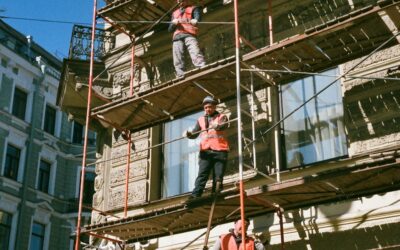When it comes to buying or selling a property in Italy, there are essential documents that need to be in order. One important document for property owners is the Habitability Certificate. This certificate is a legal requirement and ensures that a property meets specific standards of safety, hygiene, livability, and energy efficiency set by current regulations. In this blog post, we will explore the significance of the Habitability Certificate, its issuance process, associated costs, and the difference between habitability and urban compliance.
When the Habitability Certificate is Issued
By law, authorities mandate the Habitability Certificate, which they issue for various situations, such as new constructions, reconstruction or elevation of existing properties, and any intervention that can impact the property’s safety, hygiene, health, and energy efficiency conditions.
Buying and Selling a House in Italy
The Habitability Certificate plays a crucial role when buying or selling a property. Furthermore, its absence can invalidate a transaction, as it verifies that the property meets the habitability requirements. Consequently, without the certificate, the landlord or potential buyer can request contract termination, compensation for damages, and even the return of the deposit. Even if the property meets the necessary requirements, the seller’s lack of a Habitability Certificate can lead to a reduction in the purchase price and compensation for the decrease in property value. Therefore, it is crucial for both buyers and sellers to ensure the presence of this document. Moreover, the responsibility for this assurance falls on the notary and real estate agent as well.
Clarity on Habitability and Suitability
In the past, there were two separate documents: the “certificato di abitabilità” for residential properties and the “certificato di agibilità” for non-residential properties. However, since 2013, these two concepts have been unified under the name “certificato di agibilità.” Today, there is no longer a distinction between habitability and suitability, and the only necessary document is the Habitability Certificate.
A Journey Through Time: From 1934 to 1967
The legal obligation for the Habitability Certificate dates back to 1934 when construction authorization was required based on health and hygiene criteria. In 1967, Law n° 765 introduced the terms “dichiarazione di abitabilità o di agibilità” for the first time, establishing the importance of these certifications.
How to Retrieve the Habitability Certificate
For older properties constructed prior to 1934, documentation attesting to their construction before that date is necessary. However, the absence of such documentation does not pose any problems, as there was no obligation for it at the time. For buildings constructed before 1967, accessing municipal archives and housing records is required. Procedures for accessing these records vary, but it usually involves retrieving deposit and release details, identifying the owner or builder at the time, and making a copy request.
The SCA: Segnalazione Certificata di Agibilità
The Habitability Certificate, known as the “Segnalazione Certificata di Agibilità” (SCA), is issued by the municipality where the property is located. It is based on the certification prepared by the architect, surveyor, or engineer who supervised the construction. The SCA serves as a self-certification that attests to compliance with regulations. To avoid penalties ranging from €100 to €450 after 90 days, the responsible party must submit the report within 15 days of completing the works.
Cost of Obtaining the Habitability Certificate
The cost of obtaining the Habitability Certificate may vary depending on the professional issuing it and the municipality. However, there are some fixed costs to consider. Administrative fees of approximately €150, two revenue stamps of €16 each, structural testing costs ranging from €400 to €4,000, and facility inspection costs ranging from €80 to €300 are typically required. The professional’s fee usually falls within the range of €150 to €1,500.
Habitability Certificate and Urban Compliance: Differences
It is crucial to distinguish between the Habitability Certificate and urban compliance to gain a comprehensive understanding. While the Habitability Certificate guarantees the safety, hygiene, and energy efficiency of buildings and systems, it does not encompass full compliance with building regulations. A recent court ruling emphasized that a property can be habitable yet non-compliant with the approved project, leading to potential sanctions.
Requesting the Habitability Certificate and Associated Costs
To obtain the Habitability Certificate, property owners need to provide the required documentation, such as proof of building registration, a declaration confirming the premise’s compliance with hygiene and sanitation standards, a certificate demonstrating compliance with installation regulations, and an electrical certification. The owner needs to submit all documents to the local municipality of residence, which generally provides a response within 30 days. The approximate cost for obtaining the certificate, including administrative fees and revenue stamps, should cost around €150.
Conclusion
In conclusion, the Habitability Certificate is an indispensable tool for property owners in Italy, guaranteeing the adherence of their properties to essential standards. Whether you are selling, renting, or renovating a property, this document holds great significance. By familiarizing yourself with the issuance process, associated costs, and the distinction between habitability and urban compliance, you can navigate the legal requirements more efficiently and ensure a seamless transaction process.
Have you obtained a Habitability Certificate for your property? We invite you to share your experiences and insights. How did it impact your property transaction? Did you encounter any challenges or benefits? Join the conversation and let us know. Together, we can deepen our understanding of this vital aspect of property ownership in Italy.



0 Comments